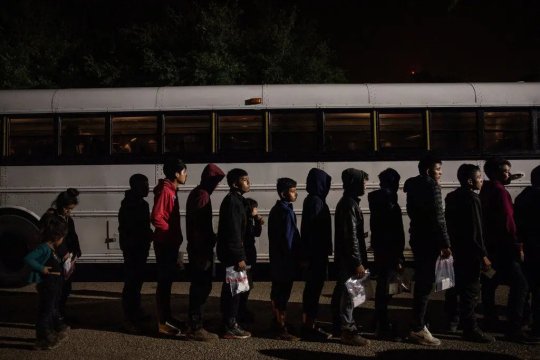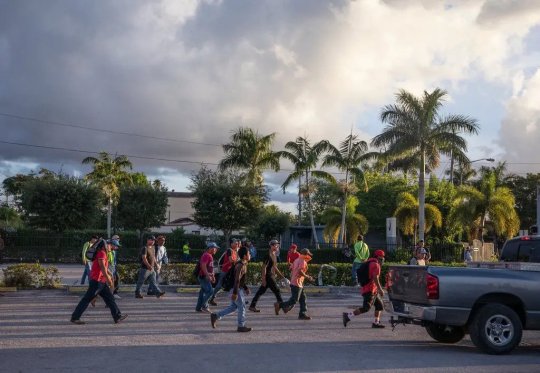#IT staffing agency in North Carolina
Explore tagged Tumblr posts
Text
IT staffing agency in North Carolina
VALiNTRY is a leading IT staffing agency based in North Carolina, specializing in providing top-tier talent to meet the diverse needs of businesses across the region. With a focus on connecting highly skilled IT professionals with companies in need of their expertise, VALiNTRY has established itself as a trusted partner in the technology staffing space. The agency works closely with clients to understand their specific staffing requirements and offers tailored solutions that help drive growth and innovation. Whether it’s for temporary, contract, or full-time positions, VALiNTRY ensures that every candidate has the technical skills, experience, and cultural fit to contribute effectively to their client’s success. VALiNTRY's team of experts has a deep understanding of the ever-evolving tech landscape, allowing them to source professionals across various IT disciplines, including software development, cybersecurity, cloud computing, data science, and network administration. Their commitment to delivering top-quality service and providing flexible staffing solutions has made them a go-to resource for organizations looking to stay competitive in an increasingly digital world. By leveraging their extensive network and cutting-edge recruitment strategies, VALiNTRY continues to be a trusted resource for both job seekers and employers in North Carolina’s thriving IT sector.
For more info visit us https://valintry.com/services/the-best-it-staffing-firm-in-north-carolina/
0 notes
Text
What are the best it staffing companies in north Carolina?
Overall, IT staffing agencies help to streamline the hiring process and connect qualified candidates with the right opportunities. if you are searching for the best it staffing companies in north Carolina. Here are some best it staffing agencies are: 1) Robert half 2) Maintec Technologies Inc 3) Spark group 4) Apollo Technical 5) Damco Group
#it staffing companies in north Carolina#It staffing company#it staffing companies#it staffing agency
4 notes
·
View notes
Text
Check out our new Charleston Staffing Agency page on our site.
#temp services#staffing agency#recruiting#jobs#charleston employment agency#jobs in charleston#south carolina staffing agency#best staffing companies in charleston#north charleston#hiring#careers#employment agencies#lowcountry
0 notes
Text
"As communities across Florida, Georgia, North Carolina, South Carolina, and Tennessee reel from the devastation of Hurricane Helene, federal agencies, aid organizations, and everyday volunteers have stepped up to help provide urgent relief.
But with unfathomable loss — including a rising death toll — rebuilding includes more than providing food, shelter, and power.
It also includes confronting the toll these disasters take on survivors’ mental health.
“It’s normal for hurricanes to cause people to experience emotional distress,” the Substance Abuse & Mental Health Services Administration explains on its website.
“Feelings such as overwhelming anxiety, constant worrying, trouble sleeping, and other depression-like symptoms are common responses before, during, and after these types of storms.”
That’s why SAMHSA created the Disaster Distress Helpline.
The DDH is the first national hotline dedicated to providing 24/7 disaster crisis counseling to all residents in the U.S. and its territories.

It is toll-free and offers multilingual support in over 100 languages, as well as services for Deaf or Hard of Hearing callers.
“The helpline puts people in need of counseling on the path to recovery. When you call or text, crisis counselors listen to what’s on your mind with patience and without judgment,” a DDH web page explains.
“DDH is staffed by trained counselors from a network of crisis call centers located across the United States.”
Callers can find crisis counseling related to any natural or human-caused disaster, information on how to recognize distress, referrals to local crisis centers for additional follow-up care, and healthy coping tips.
Many in regions like Western North Carolina and Eastern Tennessee still lack access to cell service, power, or Wi-Fi. Anyone impacted by the storm and in need of counseling is encouraged to call or text 1-800-985-5990 whenever they are able.
“The helpline is open to anyone experiencing emotional distress related to disasters,” the DDH web page continues. “This includes survivors of disasters; loved ones of victims; first responders; rescue, recovery, and relief workers; clergy; and parents and caregivers. You may call for yourself or on behalf of someone else.”
Crisis counselors do not require any identifying information from callers, though counselors may ask a few general questions at the end of their session to help improve the helpline’s services.
“If you or someone you know is struggling to cope emotionally with the effects of Hurricane Helene, you're not alone,” DDH posted on X (formerly known as Twitter). “Help is just a call or text away.”
Those who are seeking more information about disaster-related evacuations, shelters, relief distribution, volunteer opportunities, and more are encouraged to call 211 for more information."
-via GoodGoodGood, September 30, 2024
--
For anyone who's struggling in the aftermath of Hurricane Helene.
183 notes
·
View notes
Text
Also preserved on our archive
"In California, Democratic Gov. Gavin Newsom proposed cutting the state’s public health funding by $300 million. And the Department of Health in Washington state slashed more than 350 positions at the end of last year and more than 200 this year." Tell me again that the Democrats are damage control: They can't even do the right thing in the states where they have absolute majorities. You should be livid, not complacent or complicit.
Analysis by Jazmin Orozco Rodriguez and McKenzie Beard
Good morning. I’m Jazmin Orozco Rodriguez, a KFF Health News correspondent based in Elko, Nev., which is about as high in elevation as Denver, the Mile-High City. Email me about your experiences with health care in rural America at [email protected].
Today’s edition: The Harris-Walz campaign rolled out a plan to improve rural health care. Nebraska voters are set to weigh in on two conflicting abortion-related ballot initiatives. But first …
The boom-and-bust funding cycle for public health hits states
During the coronavirus pandemic, states received a rush of funding from the federal government to bolster their fight against the disease. In many cases, that cash flowed into state and local health departments, fueling a staffing surge to handle, among other things, contact tracing and vaccination efforts.
But public health leaders quickly identified a familiar boom-and-bust funding cycle as they warned about an incoming fiscal cliff once the federal grants sunset. Now, more than a year since the federal Department of Health and Human Services declared the end of the coronavirus emergency, states — such as Montana, California and Washington — face tough decisions about laying off workers and limiting public health services.
In California, Democratic Gov. Gavin Newsom proposed cutting the state’s public health funding by $300 million. And the Department of Health in Washington state slashed more than 350 positions at the end of last year and more than 200 this year.
Public health experts warn that losing staff who perform functions like disease investigation, immunization, family planning, restaurant inspection and more could send communities into crisis.
“You cannot hire the firefighters when the house is already burning,” said Brian Castrucci, president and CEO of the de Beaumont Foundation, an organization that advocates for public health policy.
In late September, HHS Secretary Xavier Becerra declared a public health emergency for states affected by Hurricane Helene, allowing state and local health authorities in Florida, Georgia, North Carolina, South Carolina and Tennessee to more easily access federal resources. Last week, ahead of Hurricane Milton’s landfall in Florida, Becerra declared another public health emergency to aid the state’s response.
If states don’t have robust public health resources ready when disasters like this hit their communities, it can have devastating effects.
Local health department staffing grew by about 19 percent from 2019 to 2022, according to a report from the National Association of County and City Health Officials that examined 2,512 of the nation’s roughly 3,300 local departments. The same report found that half of those departments’ revenue in 2022 came from federal sources.
But in some places, the pandemic cash did little more than keep small health departments afloat. The Central Montana Health District, a public health agency serving five rural counties, received enough money to retain a staff member to help handle testing, contact tracing and rolling out the coronavirus vaccines. It wasn’t enough to hire extra workers, but it allowed officials to fill a position left empty when a staffer left the department, said Susan Woods, the district’s public health director.
Now, five full-time employees work for the health district — enough to scrape by, Woods said.
“Any kind of crisis, any kind of, God forbid, another pandemic, would probably send us crashing,” she said.
Adriane Casalotti, chief of government and public affairs for the national health officials’ group, said she expects layoffs and health department budget cuts to intensify. Those cuts come as health officials work to address issues that took a back seat in the pandemic, such as increases in rates of sexually transmitted infections, suicide and substance misuse.
And rural health departments deserve more attention, Casalotti said, as they are likely to be the most vulnerable and face compounding factors such as hospital closures and the loss of services including maternity and other women’s care.
KFF Health News is a national newsroom that produces in-depth journalism about health issues and is one of the core operating programs at KFF — an independent source of health policy research, polling and journalism.
#mask up#covid#pandemic#public health#wear a mask#covid 19#wear a respirator#still coviding#coronavirus#sars cov 2
18 notes
·
View notes
Text
“The Great Depression reached into every corner of the country, but it did not affect all people equally. For many middle-class women of all races, the depression required certain changes in spending patterns: buying cheaper cuts of meat, feeding the homeless men who stopped at the back door, and doing without new clothes. Some of these women continued to do community volunteer work, raising money for the unemployed. They saw the food lines, but they did not have to join them.
Among women workers, race played an important role. The fierce competition for jobs fueled racial resentments. Mexican-American and African-American women were the first to lose their jobs and the last to get relief from welfare agencies. Often, they were already living on the margin of survival. Before 1933, when the Prohibition amendment making the manufacture or sale of alcoholic beverages illegal was repealed, many of these women turned to bootlegging, making their own beer or liquor and selling it.
…Even relatively prosperous farm women--owners, not tenants--in general produced as much as 70 percent of what their families consumed in clothing, toys, and food. They not only gardened but raised poultry. During the depression, women increased the size of their gardens and the number of their hens. They made more butter from their dairy cows and sold it. They cut up the sacks that held large amounts of flour and sewed them into underwear. In the previous decade, they had proudly begun to participate in a culture of store-bought goods. Now they began to can food again. Government agents dragged huge canning kettles across the mountains of northern New Mexico and eastern Tennessee so that women in remote farming villages could preserve their food.
Even with all this work, rural children suffered from malnutrition, and rural women faced childbirth without a doctor or midwife because they could afford neither the medical fees nor the gasoline for transportation. The women resented their declining standards of living, particularly those from better-off farm families who owned their own farms and had, during the 1920s, aspired to participate in the new domestic technology of indoor bath-rooms, modern stoves and heating, and super cleanliness.
…In 1936, a federal appeals court overruled an earlier law that had classified birth control information as obscene and thus illegal to dispense. That decision still left state laws intact, however. The number of birth control clinics nationwide rose from 55 in 1930 to 300 by 1938, but in some states and in many rural areas women still had no access to birth control. In 1937, North Carolina became the first state to provide contraceptives with tax dollar, and six others soon followed. Ironically, North Carolina’s reasoning was not that birth control was a human right but that birth control would reduce the black population.
Despite statistics showing that black women had fewer babies than white women with similar incomes and living situations, many white southern officials in states with large black populations feared a black population explosion. In 1939, the Birth Control Federation of American responded to eager southern state governments by developing “The Negro Project,” a program to disseminate birth control information, which they carefully staffed with local black community leaders. Whatever the logic, one quarter of all women in the United States in their 20s during the depression never bore children. This was the highest rate of childlessness for any decade. Many people simply decided not to get married, and marriage rates fell.
…In the mass media women seemed to be receiving mixed messages. On the one hand, in 1930, the Ladies’ Home Journal featured a former career woman confessing, “I know now without any hesitation… that [my husband’s job] must come first.” In 1931, the popular magazine Outlook and Independent quoted the dean of Barnard College, a women’s college in New York City, telling her students that “perhaps the greatest service that you can render to the community… is to have the courage to refuse to work for gain.” And on its front page in 1935, the New York Times reported that women “suffering from masculine psychological states” and an “aversion to marriage” were being “cured” by the removal of their adrenal gland. In this atmosphere, not only were women workers under fire, but women who centered their lives on women rather than on men came under attack. Lesbianism was no longer chic. Lesbian bars almost disappeared. Homosexuality was now seen by many people as just one more threat to the family.
On the other hand, movie houses showed zany screwball comedies with more complicated lessons. Often deliciously ditsy, incompetent women were rescued by sensible, capable men. Yet, the men in these movies were frequently portrayed as bumbling or slower-witted than the women. Sometimes the men were people who needed joy and whimsy restored to their lives, not an unexpected theme for a nation in the throes of an economic depression. In other movies, however, women were by no means incompetent. The women portrayed by Katharine Hepburn, Bette Davis, and Joan Crawford in the 1930s were often intelligent but needed men alternately to tame and to soften them.”
- Sarah Jane Deutsch, “Making Do with Disaster.” in From Ballots to Breadlines: American Women, 1920-1940
#sarah jane deutsch#1930s#race#gender#from ballots to breadlines#class#20th century#history#american
20 notes
·
View notes
Text
Wednesday, October 9, 2024
As Major Hurricane Approaches Florida, FEMA Faces Severe Staffing Shortage (NYT) The Federal Emergency Management Agency is running out of staff to deal with the potential devastation of Hurricane Milton as it barrels toward Tampa with wind speeds that have reached 175 miles per hour. As of Monday morning, just 9 percent of FEMA’s personnel, or 1,217 people, were available to respond to the hurricane or other disasters, according to the agency’s daily operations briefing. To put that into context: Over the previous five years, one-quarter of the agency’s staff was available for deployment at this point in the hurricane season. FEMA is stretched not just by the brutal aftermath of Hurricane Helene, which killed more than 200 people and destroyed sections of western North Carolina. Its staff is also responding to flooding and landslides in Vermont, tornadoes in Kansas, the aftermath of Tropical Storm Debby in New York and Georgia and the Watch Fire in Arizona. And those are just the disasters that were declared in the past two weeks.
A Nation of Homebodies (NYT) A recent analysis of census data found that Americans are spending more time at home, and a large part of it alone. The analysis, based on responses to the American Time Use Survey, shows that time spent at home increased by 1 hour 39 minutes a day, or 10 percent, from 2003 through 2022. It’s a trend that rose sharply during the pandemic and had yet to return to more typical levels by 2022—a sign that the pandemic may have hastened a cultural shift already in progress. Years before the first stay-at-home orders were enacted, Americans were already beginning to spend more time at home. “It’s a dramatic shift in our daily lives,” said Patrick Sharkey, a professor of sociology and public affairs at Princeton, and the author of the study. “Almost every part of our lives is more likely to take place at home.” As of 2022, time that Americans had once spent outside the home participating in activities like education, eating and drinking, had, to some extent, moved into the home. The largest shift occurred with religious activities: 59 percent occurred at home in 2022, up from 24 percent in 2003.
Dredging the World’s Biggest River (NYT) The world’s largest river is parched. The Amazon River, battered by back-to-back droughts fueled by climate change, is drying up, with some stretches of the mighty waterway dwindling to shallow pools only a few feet deep. Water levels along several sections of the Amazon River, which winds nearly 4,000 miles across South America, fell last month to their lowest level on record, according to figures from the Brazilian Geological Service. The crisis has gridlocked the Amazon, a vital watery superhighway that serves as practically the only way to connect forest communities and move commerce around some of the most remote stretches on the planet. Faced with a situation that shows no sign of abating, Brazil has resorted to an extraordinary measure that might have been unthinkable not too long ago: making the world’s largest river deeper by dredging strategic parts of it.
Ukraine strikes a Russian oil hub (AP) Ukraine’s military said it struck a major oil terminal Monday in Crimea that provides fuel for Russia’s war effort as Ukrainian President Volodymyr Zelenskyy said the war has entered a key phase. Ukraine’s General Staff said on social media that the oil terminal in Feodosia, on the south coast of the Russia-occupied Crimea Peninsula, has been supplying the Russian army with fuel and that the strike was part of an ongoing effort to “undermine the military and economic potential of the Russian Federation.” Ukraine has increasingly targeted rear areas that are essential for Russia’s onslaught, now deep into its third year. It has developed long-range drones that have hit oil depots and refineries as well as armories.
Below the surface in a ‘new Kashmir,’ anger over repression by India (Washington Post) Shuttered movie theaters are now open, as are new cafes, market roads and sports facilities. Government schools have been renamed after police officers. A train line connecting the Kashmiri capital Srinagar and Delhi is almost ready to open. The Indian flag is everywhere. After decades of violent conflict between separatists and Indian authorities that killed thousands, the Indian government now speaks of a “new Kashmir.” But these snapshots mask a feeling of repression voiced by residents across Kashmir. Since the Indian government revoked the region’s special autonomy in 2019, Kashmiris deemed too vocal or too close to separatists have been fired, jailed or warned to stay silent. After a six-year delay, Kashmir is holding elections for the local legislature. About half of Kashmir’s eligible residents, according to official poll numbers, have cast their votes over the past few weeks. “The establishment interpretation is that they are coming out in such droves because democracy has been restored,” said Siddiq Wahid, a history professor at India’s Shiv Nadar University who is from Kashmir. “Nothing could be further from the truth. The voter turnout is a keen realization of the fact that enough is enough.”
Adoption lawsuit (Foreign Policy) A South Korean woman sued her government, an adoption agency, and an orphanage on Monday over her daughter’s wrongful adoption, saying her then-4-year-old child was sent to the United States in 1976 just months after being kidnapped. The prosecution is seeking $445,000 in damages from Seoul. Han Tae-soon, the mother, was part of an Associated Press investigation detailing how the South Korean government collaborated with adoption agencies and other child services to send around 200,000 children obtained via dubious means overseas. These methods included falsifying paperwork, kidnapping, and removing newborns from their birth parents. Han reunited with her daughter in 2019 through DNA testing.
Beirut airstrikes: collateral damage (BBC) Dr Taghrid Diab does not follow Colonel Avichae Adraee on social media, so she didn’t see the IDF’s spokesman warning when it was posted late on Saturday night. But her daughter did, and she forwarded it to her mother with an urgent question. “Is this your clinic?” Col Adraee sometimes posts evacuation warnings on social media ahead of an Israeli air strike in Lebanon. The posts contain an aerial image with the target building highlighted in red. Dr Diab, a gynaecologist who provides care to hundreds of women in the Beirut suburb of Dahieh, studied the image. She recognised the apartment building directly next door to her clinic, shaded by an ominous red square. She began to cry. “After 30 years of work, I knew my clinic was going be destroyed,” she said. “I felt like my heart was going to explode.” The southern suburb of Beirut has been heavily targeted by Israel, whose military said it had “conducted a series of targeted strikes on a number of weapons storage facilities” belonging to Hezbollah. Dr Diab’s clinic was also destroyed, just as she had feared.
Lebanon’s displaced search for refuge (Washington Post) As the manager at one of Beirut’s top nightclubs, Gaelle Irani is usually preoccupied with booking DJs and taking reservations. Now, she’s in charge of looking after 400 displaced people, converting a venue for revelry into a place of refuge. For her, and hundreds of thousands across Lebanon, life changed overnight last month when a long-simmering border conflict between Hezbollah and Israel exploded into full-on war. Some 1.2 million people—about 20 percent of the population—have been displaced by relentless Israeli airstrikes and an advancing ground invasion. With so many uprooted so rapidly, this fragile state is struggling to cope. The government has set up 973 shelters across the country, housing almost 180,000 people, but most are already at capacity. While some families have been able to afford hotel rooms or apartment rentals, many others have been reduced to squatting in vacant buildings or sleeping in cars and public parks. Skybar, in Beirut’s plush waterfront district, was never meant to be a shelter, but when people began parking nearby and camping out on the pavement, the owners felt obligated to help. “We started off with 70 people, and now we’re around 400,” Irani said.
‘Our whole life is displacement’ (BBC) The UN says 90% of Gaza’s population has been displaced by Israel’s retaliation for the Hamas attacks. Foreign reporters are not allowed into the territory and the BBC relies on local journalists to cover the humanitarian crisis. We briefed them with questions for some of the Palestinians we have spoken to in Gaza over the past 12 months: Displacement means uncertainty. Constant fear. Will the child, sent for a bucket of water, come home? Or will they return to find their home flattened, and their family buried under the rubble? These are the questions that haunt Abed-Alrahman’s young widow, Nawara, every day. “There is always shelling and we are always afraid, terrified. I constantly hold my children close and hug them,” she says. The Israel Defense Forces tell people to move to “humanitarian zones”. People flee but often find no safety. In the words of Nawara, there is “no safe place in the Gaza Strip”. Nawara complains of the overflowing sewage in the street. The lack of medical supplies. Like so many in Gaza, with no income, she depends on what food her in-laws or charities can supply.
Sudan's warring sides target local aid volunteers fighting famine (Reuters) Local volunteers who have helped to feed Sudan's most destitute during 17 months of war say attacks against them by the opposing sides are making it difficult to provide life-saving aid amid the world's biggest hunger crisis. Many volunteers have fled under threat of arrest or violence, and communal kitchens they set up in a country where hundreds are estimated to be dying of starvation and hunger-related diseases each day have stopped serving meals for weeks at a time. International humanitarian agencies, which have been unable to get food aid to parts of Sudan at risk of famine, have ramped up support for volunteer aid groups. But that has made them more of a target for RSF looters, 10 of the volunteers told Reuters by phone. "We were safe when the RSF didn't know about the funding," said Gihad Salaheldin, a volunteer who left Khartoum city last year and spoke from Cairo. "They see our kitchens as a source of food." Both sides have also attacked or detained volunteers on suspicion of collaborating with their opponents, a dozen volunteers said.
Costco’s Gold Bars Fly Off Shelves (Bloomberg) Gold’s breathtaking surge this year to repeated record highs hasn’t stopped it from flying off shelves at Costco stores across the US. Costco’s one-stop shopping convenience is bringing gold buying to the masses by offering prices that undercut traditional precious metals dealers and extra rewards for its most loyal customers. A survey of stores across 46 states revealed how hard it is for the retailer to keep its gold products stocked even as prices for the metal continue to climb.
Dutch museum finds beer can artwork in bin (BBC) A Dutch museum had to pick artwork out of the bin after a member of staff thought that the display, which consisted of two empty beer cans, was leftover rubbish. All The Good Times We Spent Together by French artist Alexandre Lavet shows two dented beer cans on the floor. They were exhibited inside the museum’s lift as if left behind by construction workers. But a lift technician thought the art was simply the leftovers of lazy visitors and threw them in the bin. Once a curator spotted that the artwork was missing, staff searched for it and it was found in a bin bag.
3 notes
·
View notes
Text

Cristian works a construction job instead of going to school. He is 14.
Carolina packages Cheerios at night in a factory. She is 15.
Wander starts looking for day-labor jobs before sunrise. He is 13.

Oscar Lopez, a ninth grader, works overnight at a sawmill in South Dakota. On this day, he skipped school to sleep after a 14-hour shift.

Children being processed by the U.S. Border Patrol in Roma, Texas. In the past two years alone, 250,000 unaccompanied minors have come into the country.

Cristian, 14, has been working in construction in North Miami for two years instead of going to school. Federal law bars minors from a long list of such jobs.

A detention site in the Rio Grande Valley in March 2021. The Biden administration has faced pressure to move unaccompanied children through the system quickly.

Migrant children were among the day laborers who gathered on a school day in Homestead, Fla., to find roofing, landscaping or other work.

A handwritten ledger, in Spanish, of Nery Cutzal’s debts to his sponsor, including money for tacos and clothes. The child owed more than $4,000, plus interest. Court information has been redacted for privacy.

Jose Vasquez, 13, photographed at the church he attends in Grand Rapids, Mich. He works 12-hour shifts, six days a week, at an egg farm outside the city.

A selfie taken by a 17-year-old at a Hearthside facility in Grand Rapids. She said older men at the factory sometimes harassed her.

From left: Oscar Nambo Dominguez, 16, was crushed last year under an earthmover near Atlanta. Edwin Ajacalon, 14, was hit by a car while delivering food on a bike in Brooklyn. Juan Mauricio Ortiz, 15, died on his first day of work for an Alabama roofing company when he fell about 50 feet.

Young workers exited an overnight cleaning shift last October at a JBS pork plant in Worthington, Minn. Their employer, a sanitation company, was later fined for violating child labor laws

Carolina Yoc, back right, worked on math problems after a night shift at a Grand Rapids food plant. The 13-year-old girl sitting next to her said she also worked nights at a factory.
It has been a little more than a year since Carolina left Guatemala, and she has started to make some friends. She and another girl who works at Hearthside have necklaces that fit together, each strung with half a heart. When she has time, she posts selfies online decorated with smiley faces and flowers.
Mostly, though, she keeps to herself. Her teachers do not know many details about her journey to the border. When the topic came up at school recently, Carolina began sobbing and would not say why.
After a week of 17-hour days, she sat at home one night with her aunt and considered her life in the United States. The long nights. The stress about money. “I didn’t have expectations about what life would be like here,” she said, “but it’s not what I imagined.”
She was holding a debit card given to her by a staffing agency, which paid her Hearthside salary this way so she did not have to cash checks. Carolina turned it over and over in her palm as her aunt looked on.
“I know you get sad,” Ms. Ramirez said.
Carolina looked down. She wanted to continue going to school to learn English, but she woke up most mornings with a clenched stomach and kept staying home sick. Some of her ninth grade classmates had already dropped out. The 16-year-old boy she sat next to in math class, Cristian Lopez, had left school to work overtime at Hearthside.

Cristian lived a few minutes away, in a bare two-room apartment he shared with his uncle and 12-year-old sister, Jennifer.
His sister did not go to school either, and they had spent the day bickering in their room. Now night had fallen and they were eating Froot Loops for dinner. The heat was off, so they wore winter jackets. In an interview from Guatemala, their mother, Isabel Lopez, cried as she explained that she had tried to join her children in the United States last year but was turned back at the border.
Cristian had given his uncle some of the money he earned making Chewy bars, but his uncle believed it was not enough. He had said he would like Jennifer to start working at the factory as well, and offered to take her to apply himself.
Cristian said he had recently called the H.H.S. hotline. He hoped the government would send someone to check on him and his sister, but he had not heard back. He did not think he would call again.
(continue reading)
29 notes
·
View notes
Text
When Carolina left Guatemala, she had no real understanding of what she was heading toward, just a sense that she could not stay in her village any longer. There was not much electricity or water, and after the pandemic began, not much food.
The only people who seemed to be getting by were the families living off remittances from relatives in the United States. Carolina lived alone with her grandmother, whose health began failing. When neighbors started talking about heading north, she decided to join. She was 14.
“I just kept walking,” she said.
Carolina reached the U.S. border exhausted, weighing 84 pounds. Agents sent her to an H.H.S. shelter in Arizona, where a caseworker contacted her aunt, Marcelina Ramirez. Ms. Ramirez was at first reluctant: She had already sponsored two other relatives and had three children of her own. They were living on $600 a week, and she didn’t know Carolina.
When Carolina arrived in Grand Rapids last year, Ms. Ramirez told her she would go to school every morning and suggested that she pick up evening shifts at Hearthside. She knew Carolina needed to send money back to her grandmother. She also believed it was good for young people to work. Child labor is the norm in rural Guatemala, and she herself had started working around the second grade.
One of the nation’s largest contract manufacturers, Hearthside makes and packages food for companies like Frito-Lay, General Mills and Quaker Oats. “It would be hard to find a cookie or cracker aisle in any leading grocer that does not contain multiple products from Hearthside production facilities,” a Grand Rapids-area plant manager told a trade magazine in 2019.
General Mills, whose brands include Cheerios, Lucky Charms and Nature Valley, said it recognized “the seriousness of this situation” and was reviewing The Times’s findings. PepsiCo, which owns Frito-Lay and Quaker Oats, declined to comment.
Three people who until last year worked at one of the biggest employment agencies in Grand Rapids, Forge Industrial Staffing, said Hearthside supervisors were sometimes made aware that they were getting young-looking workers whose identities had been flagged as false.
“Hearthside didn’t care,” said Nubia Malacara, a former Forge employee who said she had also worked at Hearthside as a minor.
In a statement, Hearthside said, “We do care deeply about this issue and are concerned about the mischaracterization of Hearthside.” A spokesman for Forge said it complied with state and federal laws and “would never knowingly employ individuals under 18.”
Gotta unionize the children
8 notes
·
View notes
Text
WGHP FOX8 Greensboro: North Carolina town shuts down police department, turns to county sheriff’s office for patrols
BETHEL, N.C. (WNCT) – The Town of Bethel has decided for now to cease operations of the Bethel Police Department. Officials have signed an agreement with the Pitt County Sheriff’s Office.
“A couple of years ago, not our current board, but our previous board, we had discussed maybe shutting down the police department, but we never acted on it,” said Bethel Mayor Carl Wilson. “As time went by and we started losing officers, the current board decided that we need to maybe go ahead and talk with the (Pitt County) sheriff.”
The Bethel Police Department was down to only two officers. The agreement with the Pitt County Sheriff’s Office was signed on April 16 and the police department ceased operations on June 6.
“The Pitt County Sheriff’s Office will be assisting the town of Bethel by providing off-duty deputies for contracted coverage within the town during times as negotiated. At other times when staffing is not present, deputies will be available to respond to calls for service within the town as they are going about their usual duties,” Sgt. Lee Darnell, the public relations and information officer, said in a statement to WNCT.
The statement went on to say, “The law enforcement recruiting and retention crisis that all agencies are facing right now has put us all in a difficult position. Our office certainly understands having to make tough decisions because of this environment.”
Wilson said with this agreement, they’re able to change things as they go along when needed. Both the sheriff’s office and the town of Bethel said their priority is the welfare of all citizens.
“We want them to feel safe by having the sheriff’s department to do the coverage for us. And at the same time, as they see more and more of our sheriff cars riding around, I’m hoping that they will feel safe in the community,” said Wilson.
Wilson said the agreement is signed for only a couple of months at a time. So far, there’s been positive feedback from those living in Bethel on this new agreement.
#North Carolina town shuts down police department#turns to county sheriff’s office for patrols#north carolina#bethel police dept#pitt county sheriff
4 notes
·
View notes
Text
Leading Phlebotomy Agencies: Streamlining Bloodwork Services for Healthcare Providers
Top Phlebotomy Agencies: Streamlining Bloodwork Services for Healthcare Providers
Top Phlebotomy Agencies: Streamlining Bloodwork Services for Healthcare Providers
Introduction
Phlebotomy, the practice of drawing blood from patients for diagnostic purposes, plays a crucial role in healthcare. However, managing bloodwork services in-house can be a daunting task for healthcare providers. That’s where phlebotomy agencies come in. These specialized agencies are dedicated to providing high-quality phlebotomy services, streamlining bloodwork processes, and ultimately improving patient care. In this article, we will explore some of the top phlebotomy agencies that are leading the way in revolutionizing bloodwork services for healthcare providers.
Benefits of Using Phlebotomy Agencies
Expertise: Phlebotomy agencies employ highly trained phlebotomists who are experts in drawing blood and handling specimens, ensuring accurate results.
Efficiency: By outsourcing phlebotomy services to agencies, healthcare providers can streamline bloodwork processes, reduce wait times, and improve overall efficiency.
Cost-Effectiveness: Outsourcing phlebotomy services can be more cost-effective than hiring and training in-house phlebotomists, saving healthcare providers money in the long run.
Top Phlebotomy Agencies
Below are some of the top phlebotomy agencies that are setting the standard for quality bloodwork services:
Agency Name
Services Offered
Locations
Phlebotomy Plus
Mobile phlebotomy services, specimen collection, blood draws
Nationwide
ProVen Phlebotomy
Phlebotomy training, phlebotomy staffing, bloodwork services
California, New York, Texas
Phlebotomist On-The-Go
On-demand phlebotomy services, blood draws, specimen collection
Florida, Georgia, North Carolina
Practical Tips for Choosing a Phlebotomy Agency
Check for certifications: Make sure the phlebotomy agency is licensed and certified to provide bloodwork services.
Read reviews: Look for feedback from other healthcare providers to ensure the agency’s reliability and quality of service.
Consider location: Choose an agency that operates in your area or offers mobile services for convenience.
Conclusion
Phlebotomy agencies are playing a vital role in streamlining bloodwork services for healthcare providers. By outsourcing phlebotomy services to these specialized agencies, healthcare providers can benefit from expertise, efficiency, and cost-effectiveness. When choosing a phlebotomy agency, consider factors such as certifications, reviews, and location to ensure the best possible service. With the help of top phlebotomy agencies, healthcare providers can focus on delivering high-quality patient care while leaving the bloodwork to the experts.
youtube
https://phlebotomycertificationcourse.net/leading-phlebotomy-agencies-streamlining-bloodwork-services-for-healthcare-providers/
0 notes
Text
IT staffing agency in North Carolina
VALiNTRY is a premier IT staffing agency in North Carolina, recognized for its exceptional ability to match highly skilled technology professionals with businesses that need specialized IT support. With years of experience in the industry, VALiNTRY has developed an in-depth understanding of the challenges organizations face in securing top-notch IT talent. This knowledge allows them to provide staffing solutions that are not only efficient but also customized to meet the unique demands of each client. The agency specializes in a variety of IT roles, including but not limited to, software development, infrastructure management, cloud computing, cybersecurity, and data analytics. VALiNTRY’s vast network of experienced professionals enables them to offer both temporary and permanent staffing options, helping businesses scale their teams according to project needs, deadlines, or long-term goals. What sets VALiNTRY apart is its commitment to building lasting relationships with both clients and candidates. Their hands-on approach to recruitment ensures that businesses are matched with professionals who possess not just the technical skills required but also the ability to adapt to the organizational culture. With a reputation for quality, speed, and precision, VALiNTRY is a trusted partner for businesses in North Carolina looking to stay competitive in the rapidly changing IT landscape, providing them with the talent needed to drive innovation and success.
For more info visit us https://valintry.com/services/the-best-it-staffing-firm-in-north-carolina/
#IT staffing agency in North Carolina#IT staffing firm in North Carolina#IT staffingservice in North Carolina
0 notes
Text
Medical Staffing Excellence in North Carolina
In the dynamic landscape of healthcare, finding the right professionals to join your team is crucial. Nana Care Staffing emerges as the epitome of Medical Staffing Company in North Carolina. This blog explores the unparalleled benefits and services offered by Nana Care Staffing, establishing it as the go-to solution for healthcare staffing needs in the Tar Heel State.

Unrivaled Recruitment Expertise
At the heart of Nana Care Staffing's success is its unparalleled recruitment expertise. Our agency goes beyond the traditional staffing approach, meticulously selecting healthcare professionals who not only meet the required qualifications but also embody the values of excellence and compassion. This meticulous approach ensures that our clients receive staffing solutions that align seamlessly with their organizational culture and healthcare goals.
Comprehensive Staffing Solutions
Nana Care Staffing doesn't just offer staffing; it provides comprehensive solutions tailored to the unique needs of healthcare organizations in North Carolina. Whether it's temporary staffing, permanent placements, or specialized healthcare roles, our agency excels in delivering versatile solutions that address the diverse demands of the ever-evolving healthcare industry.
North Carolina's Healthcare Talent Hub
As the leading medical staffing services in North Carolina Nana Care Staffing has established itself as the talent hub for healthcare professionals. Our extensive network includes skilled and experienced individuals across various healthcare disciplines, ensuring that we can meet the staffing requirements of healthcare facilities ranging from small clinics to large hospitals.
Cutting-Edge Technology Integration
In an era where technology plays a pivotal role in healthcare, Nana Care Staffing stays ahead by integrating cutting-edge technology into its recruitment processes. From advanced applicant tracking systems to artificial intelligence-driven matching algorithms, our agency harnesses the power of technology to streamline the recruitment journey, providing clients with efficient and effective staffing solutions.
Quality Assurance and Compliance
Nana Care Staffing prioritizes quality assurance and compliance in every aspect of its operations. Our commitment to excellence is reinforced by stringent quality control measures and adherence to industry regulations. Clients can trust that each candidate presented by Nana Care Staffing undergoes thorough vetting to ensure not only their skills but also their commitment to maintaining the highest standards of patient care.
Recruitment Expertise: Nana Care Staffing prides itself on having a team of recruitment experts with a deep understanding of the healthcare industry. Our rigorous selection process ensures that we source and place qualified professionals, meeting the specific needs of healthcare facilities across North Carolina.
Comprehensive Credentialing Process: Quality assurance begins with a comprehensive credentialing process at Nana Care Staffing. We meticulously verify the credentials, licenses, and qualifications of every healthcare professional in our network.
Industry Standards and Regulations: Nana Care Staffing understands the importance of compliance with industry standards and regulations. Our commitment to upholding the highest ethical and professional standards is reflected in our adherence to guidelines set by regulatory bodies. Clients can trust that our medical staffing services align with the latest healthcare regulations
Personalized Solutions for Healthcare Facilities: Recognizing that each healthcare facility has unique staffing requirements, Nana Care Staffing specializes in offering personalized solutions. Our flexible staffing models cater to the diverse needs of hospitals, clinics, and other healthcare establishments. From temporary placements to permanent staffing, our tailored solutions ensure seamless integration with the existing healthcare teams.
Timely and Efficient Staffing Solutions: In the fast-paced world of healthcare, timely staffing solutions are critical. Nana Care Staffing excels in providing swift and efficient staffing services, minimizing downtime for healthcare facilities. Our responsive approach to staffing ensures that clients have access to the right professionals when they need them, maintaining continuity in patient care.

Responsive and Agile Service
Nana Care Staffing understands the urgency in healthcare staffing needs. Our team prides itself on being responsive and agile, swiftly adapting to the dynamic nature of healthcare demands in North Carolina. Whether faced with sudden spikes in patient volume or the need for specialized skills, our agency ensures that clients receive prompt and reliable staffing solutions.
A key distinguishing factor of Nana Care Staffing is its client-centric approach. We prioritize understanding the unique requirements and challenges faced by each client, fostering collaborative partnerships that extend beyond traditional staffing.
Testimonials - Voices of Confidence
The success of Nana Care Staffing is best echoed in the voices of satisfied clients and healthcare professionals. Explore testimonials that highlight the positive impact our staffing solutions have had on healthcare organizations throughout North Carolina. These voices of confidence serve as a testament to our dedication to excellence and the enduring partnerships we build with our clients.
Conclusion
In the ever-evolving realm of healthcare, Nana Care Staffing emerges as the beacon of Medical Staffing Excellence in North Carolina. From unmatched recruitment expertise to a client-centric approach, our agency is committed to elevating the healthcare landscape by providing top-tier staffing solutions. Contact us at Nana Care Staffing for a partnership that goes beyond traditional staffing – a partnership that brings excellence to your healthcare team in every placement.
0 notes
Text
Maintaining personal hygiene is a critical aspect of senior health, yet it’s an area that can often be overlooked. As people age, they may face challenges that make daily grooming and hygiene tasks difficult to complete independently.
0 notes
Text

Career Agency in Fayetteville NC (910) 437-5959
Locally owned and operated, Express Employment Professionals in Fayetteville, NC is a Full-Service Staffing and Recruitment Firm that continually exceed expectations by connecting top-notch professionals with leading companies and driving success through exceptional staffing solutions.
Express Employment Professionals - Fayetteville, NC 894-E Elm Street Fayetteville, North Carolina 28303 (910) 437-5959 https://www.expresspros.com/FayettevilleNC
0 notes
Text
"Business owners around the country are offering up a lament: 'no one wants to work.' A McDonalds franchise said they had to close because no one wants to work; North Carolina congressman David Rouzer claimed that a too-generous welfare state has turned us all lazy as he circulated photos of a shuttered fast-food restaurant supposedly closed 'due to NO STAFF.'
Most of these complaints seem to be coming from franchised restaurants. Why? Well, it’s not complicated. Service workers didn’t decide one day to stop working — rather huge numbers of them cannot work anymore. Because they’ve died of coronavirus.
A recent study from the University of California–San Francisco looks at increased morbidity rates due to COVID, stratified by profession, from the height of the pandemic last year. They find that food and agricultural workers morbidity rates increased by the widest margins by far, much more so than medical professionals or other occupations generally considered to be on the 'front lines' of the pandemic. Within the food industry, the morbidity rates of line cooks increased by 60 percent, making it the deadliest profession in America under coronavirus pandemic.
Line cooks are especially at risk because of notoriously bad ventilation systems in restaurant kitchens and preparation areas. Anyone who has ever worked a back-of-the-house job knows that it’s hot, smelly, and crowded back there, all of which indicate poor indoor air quality. The Center for Disease Control and Prevention and Environmental Protection Agency recommended increasing indoor ventilation to fight the virus, but such upgrades are costly and time consuming. There is no data available on how many restaurants chose not to upgrade their ventilation systems, but given how miserly franchise owners are with everything else, one could guess that many, if not most, made no upgrades at all.
Ventilation issues are deadliest for line cooks and other back-of-house jobs, but there are other reasons why food workers’ morbidity rates shot up. Food workers are much more likely to be poor and/or a racial or national minority, and poor people and black and Latino workers are much more likely to die of complications from the coronavirus.
Restaurants are often intentionally short staffed, making it difficult to take time off, so sick workers likely still came to work (and infected others in the process). Bars and restaurants are COVID-19 hotspots, and service workers and customers alike get sick after prolonged restaurant exposure. The difference is that many of those customers have health insurance and other safeguards to prevent them from dying of the illness; 69 percent of restaurants, on the other hand, offer their employees no health benefits at all.
When coronavirus is spread at restaurants, and restaurant workers make little money and rarely earn health benefits, it’s no wonder morbidity rates are so much higher for food service workers. But rather than collectively grieve the deaths of tens of thousands of the people who serve us and keep us fed, and keep such tragedies in mind when considering the state of the food-service industry labor market today, business owners and their political lackeys call these workers 'lazy.'
There are, of course, also living, breathing people who have decided they do not want to risk their lives for $7.25 per hour and no health benefits. That is a perfectly rational decision for the homo economicus to make. Given how dangerous restaurant work is during a viral pandemic, if restaurant owners really wanted more workers, they would offer living wages, health benefits, and adequate personal protective equipment. But all the wage increases in the world won’t bring back the dead.
There aren’t enough people working in the service industry, and service bosses have somehow turned that into our problem, into something we ought to be ashamed of. We shouldn’t fall for it. Profits accumulate because of labor — without workers to exploit, the owning class can’t get richer. Capitalists cannot exploit the labor of the dead, so when large swathes of the working class die, they turn their ire on the living.
This is a barbaric response to mass tragedy. Workers across the country and the globe are dead or grieving. We shouldn’t risk further tragedies for a paltry minimum wage."
- Sandy Barnard, "Service Workers Aren’t Lazy — They Just Don’t Want to Risk Dying for Minimum Wage." Jacobin, 5 May 2021.
#sandy barnard#quote#quotations#covid 19#food service industry#labor rights#minium wage#economics#democratic socialism#healthcare#work#neoliberalism#libertarianism#capitalism#classism#worker exploitation#poverty#eat the rich
57K notes
·
View notes